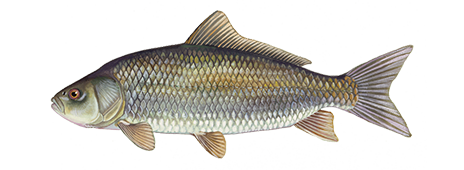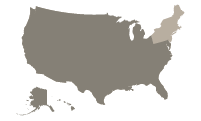
Bigmouth Buffalo
The Bigmouth buffalo species does not form a large sport fishery since it will not take normal types of baits. It is the largest member of the sucker family, growing to over 70 lb.

Region
Midwest, South, West
Catch ease
Medium
Habitat
Lake, River, Pond
How to identify a Bigmouth Buffalo
In general body shape, the Bigmouth buffalo resembles the carp. The dorsal fin is similar, beginning with a tall lobe near the middle of the back and continuing to a lower portion nearly at the tail. The carp has a single serrated spine at the beginning of the dorsal fin, while the bigmouth buffalo has no spines in any of the fins.
The toothless mouth is relatively large and wide, and slants downward when closed. The upper lip begins almost on the same level with the eyes. In comparison, the mouth of the smallmouth buffalo, is smaller, almost horizontal when closed, subterminal, and protracts downward in typical sucker fashion. The body of the bigmouth buffalo is coppery olive-brown to slate-blue above, becoming lighter toward the belly, which is white.
Where to catch Bigmouth Buffalo
The Bigmouth Buffalo can be found in the Lake Eerie, Ohio, and Mississippi drainages from Canada to the Gulf of Mexico, the bigmouth buffalo has also been introduced into Arizona and California.
The following list includes places where you can catch Bigmouth buffalo:
| Freshwater Lakes and Ponds |
| Overhanging Trees and Bushes |
| Rock and Boulder Pockets |
| Drop-Offs |
| Undercuts |
| Outsides of Bends |
| Riparian Zones |
| Dams and Falls |
| Merging Currents |
| Current Edges |
how to catch Bigmouth Buffalo
About 90 percent of the Bigmouth buffalos diet consists of small crustaceans. It also feeds on algae and other plant matter, but very seldom eats insects, insect larvae, or other fish. The following are fishing methods you can use to catch Bigmouth Buffalo:
Bigmouth Buffalo lures, tackle & bait
The following are fishing lures, tackle and bait you can use to catch Bigmouth Buffalo:
